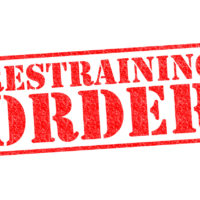What You Should Know about Violating a Restraining Order in California

Restraining orders, also known as protective orders, are often used by courts and law enforcement to protect alleged victims of domestic violence or harassment from additional abuse or threats of violence. Restraining orders can be imposed with little warning, and they can result in a major disruption of your normal routine. If you’re facing a restraining order in Ventura county, read on to learn more about what this might mean for you, and contact an experienced Ventura defense attorney if you have additional questions.
How a restraining order can be violated
Judges can tailor restraining orders to unique circumstances, so that actions which might violate one restraining order would be acceptable under another. As a result, it’s important to understand the terms of your particular restraining order when it is imposed. For example, if the restraining order contains a no-contact condition, then the subject of the restraining order could face charges of a violation for something as simple as writing a letter to the victim or tagging them in a post on Facebook. If there is a stay away order mandating that the restrained person not contact the protected person, then the restrained person could face charges for visiting the home or workplace of the protected person, even if this is where the restrained person also lived or worked before the order.
How to prove that a restraining order was violated
Proving a violation of a restraining order requires the alleged victim show the following:
- The existence of a valid restraining order: If the court issued a restraining order without a proper legal basis, then it may be invalid.
- Notice of the restraining order’s existence to the subject of the order: The subject of the order must have been provided notice of the restraining order and an opportunity to read it, either by being present in court when the order is issued, or by receiving notice from a police officer.
- Intentional violation of the restraining order: If the subject of a restraining order accidentally violates the order, then they cannot face criminal charges for a violation. For example, if the person restrained under an order happens to bump into the protected person while shopping for groceries, then that person will likely not face charges for violating a stay-away order. That said, the restrained person must leave immediately to avoid turning an accidental violation into an intentional one.
Violations of a restraining order can result in fines and jail time, and they are often combined with other charges. Speak to a defense attorney if you’re being accused of violating a restraining order.
